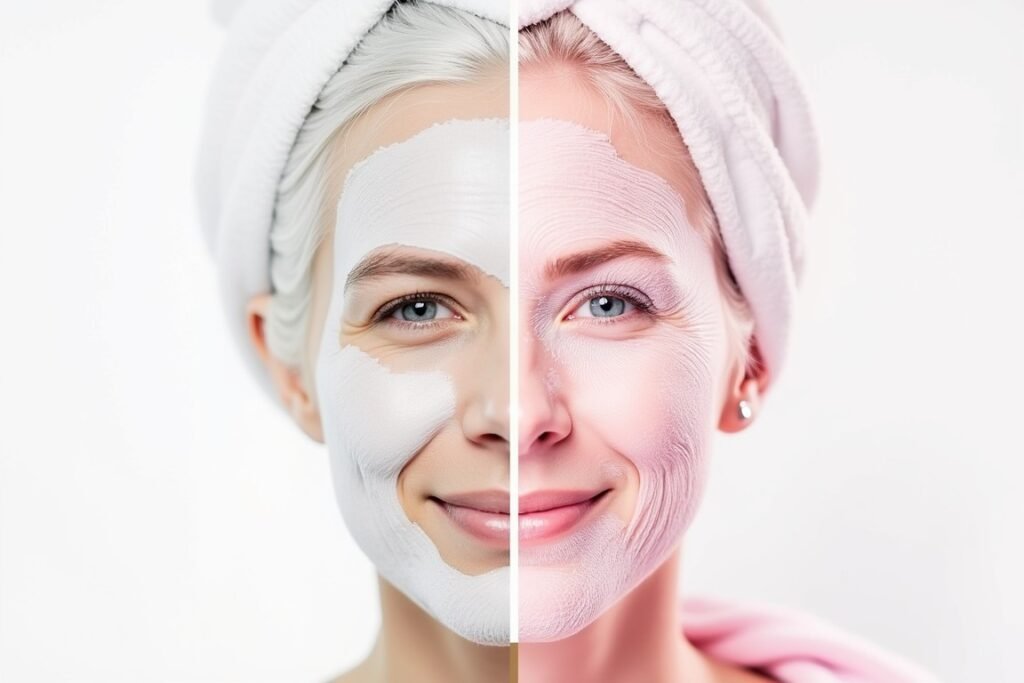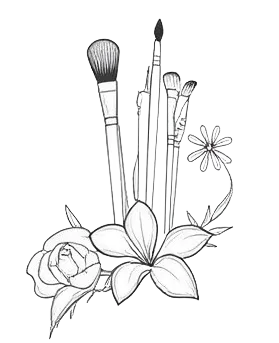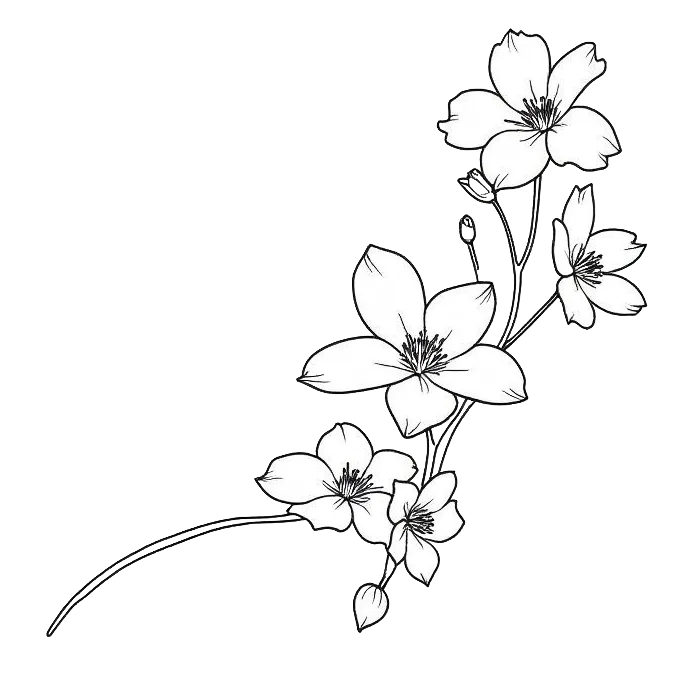Attending a funeral calls for respect and sensitivity, reflected not only in our behavior but also in how we dress. Choosing the right attire shows regard for the departed and their loved ones, yet nuances are often overlooked. This guide explains what to wear to a funeral—for women and men—while considering seasonal factors and the type of ceremony, helping you dress with dignity and compassion.
Key facts:
- Ubiór na pogrzebie ma kluczowe znaczenie, wyrażając szacunek i solidarność z rodziną zmarłego.
- Różne kultury i tradycje mają odmienne preferencje dotyczące stroju żałobnego, co wymaga uwzględnienia i zrozumienia.
- Uniwersalne wskazówki dotyczące stroju obejmują wybór ciemnych, stonowanych kolorów i skromnych, prostych ubrań.
- Dostosowanie stroju do warunków pogodowych i pory roku jest istotne dla zachowania komfortu i szacunku.
- Należy unikać jaskrawych kolorów, zbyt casualowych ubrań oraz przesadzonych akcesoriów.
Contents
Why is the outfit for a funeral so important?
Attending a funeral is a solemn occasion that demands a significant level of respect and sensitivity, and the attire chosen plays a crucial role in conveying these sentiments. The outfit worn at a funeral is not merely about personal style but serves as a non-verbal expression of sympathy and solidarity with the grieving family.
Wearing appropriate attire helps to honor the memory of the deceased, demonstrating a shared understanding of the somber nature of the event. It is an outward display of respect for cultural and familial traditions, which often dictate specific dress codes to maintain the dignity of the ceremony. Choosing the right clothes is a way to show that you acknowledge and uphold these traditions, offering comfort to those mourning by conforming to the expected norms.
Clothing choices at funerals also reflect one’s awareness of the cultural and familial expectations surrounding the event. Different cultures have varying customs regarding funeral attire, often influenced by religious or traditional beliefs. For instance, while black is a common choice in many Western cultures symbolizing mourning and respect, other cultures might prefer white or even specific colors that hold particular significance.
Understanding and adhering to these expectations is crucial, as it demonstrates cultural sensitivity and an appreciation for the family’s values. By dressing appropriately, attendees can show their empathy and consideration, reinforcing the collective support for the bereaved during a difficult time.
General rules – universal clothing tips for everyone
When attending a funeral, it’s essential to dress in a manner that reflects the solemnity and respectfulness of the occasion. Here are some universal clothing tips suitable for both men and women:
- Choose dark, subdued colors such as black, navy, or charcoal.
- Opt for modest and simple attire that covers shoulders and knees.
- Avoid flashy patterns and excessive embellishments.
- Ensure clothing is clean, well-fitted, and pressed.
- Limit accessories to minimal, understated pieces.
Modesty and simplicity are key when selecting an outfit for a funeral. Dark, subdued colors such as black, navy, or charcoal are universally recognized as appropriate for mourning, signifying respect and solemnity.
Both men and women should prioritize modest attire that covers shoulders and knees, avoiding any clothing that may draw undue attention. Simplicity in design is also crucial; flashy patterns or excessive embellishments can be distracting and are generally considered inappropriate for such a somber event.
Respectfulness extends beyond just the choice of colors and cuts. It also involves ensuring that your attire is clean, well-fitted, and pressed, reflecting the care and consideration given to the occasion. Accessories should be kept to a minimum, with understated pieces that complement rather than overshadow the outfit.
By following these guidelines, attendees can demonstrate their respect for the deceased and their family, aligning with the cultural and social expectations of the ceremony. This approach not only honors the memory of the departed but also supports the grieving family by adhering to the norms of the event.

How to dress for a funeral as a woman
When dressing for a funeral as a woman, it is crucial to select attire that reflects respect and solemnity. Here are some specific recommendations:
- To Wear:
- Dresses or skirts that fall below the knee
- Blouses or tops with sleeves or a tasteful cover-up
- Dark, muted colors like black, navy, or charcoal
- Closed-toe shoes with a modest heel or flat
- A simple coat or cardigan, depending on the weather
- To Avoid:
- Bright colors or bold patterns
- Revealing or tight-fitting clothes
- Excessive jewelry or flashy accessories
- Open-toed sandals or overly casual footwear
When choosing your funeral attire, opt for dresses or skirts that fall below the knee to maintain a respectful appearance. Pair them with blouses or tops that have sleeves, ensuring that your shoulders are covered. If the top lacks sleeves, a tasteful cover-up like a shawl or cardigan can offer the needed modesty. Dark, muted colors such as black, navy, or charcoal are universally appropriate for mourning, reflecting the somber nature of the occasion.
Footwear should be practical and respectful, with closed-toe shoes being the best choice. A modest heel or flat ensures comfort during the service and any walking involved. Avoid open-toed sandals or overly casual footwear, as these can detract from the formality of the event. In cooler weather, a simple coat or cardigan can provide warmth while maintaining the outfit’s understated elegance.
By adhering to these guidelines, women can ensure their attire is fitting for the occasion, honoring the memory of the departed with dignity and respect.
How to dress for a funeral as a man
When dressing for a funeral as a man, it is important to choose attire that conveys respect and dignity. Here are some specific recommendations:
- Do Wear:
- A well-fitted dark suit, preferably black, navy, or charcoal
- A crisp, white or light-colored dress shirt
- A conservative tie in a solid color or subtle pattern
- Black or dark leather dress shoes
- A simple, understated belt
- Don’t Wear:
- Bright colors or bold patterns
- Casual shirts such as polo shirts or t-shirts
- Flashy or cartoon-themed ties
- Casual footwear like sneakers or sandals
- Excessive or flashy accessories
Opting for a well-tailored suit in dark hues like black, navy, or charcoal is essential when attending a funeral. These colors are traditionally associated with mourning and are universally accepted as appropriate for such somber occasions. Pairing the suit with a crisp, white or light-colored dress shirt maintains a clean, respectful appearance. The tie should be conservative, ideally in a solid color or with a subtle pattern, to avoid drawing unnecessary attention.
Footwear should complement the formality of the outfit, with black or dark leather dress shoes being the preferred choice. It’s advisable to choose shoes that are polished and in good condition, ensuring they reflect the respect you are paying. Avoid overly casual footwear such as sneakers or sandals, as these can undermine the gravitas of the occasion.
Additionally, accessories should be kept minimal and understated, with a simple belt completing the look. By following these guidelines, men can ensure their attire honors the memory of the deceased with the appropriate level of reverence and decorum.

Funeral outfit and the season
| Season | Clothing Options |
|---|---|
| Summer | Lightweight fabrics, breathable materials, short sleeves, light layers |
| Winter | Thick fabrics, overcoats, scarves, gloves, thermal wear |
| Spring | Transitional layers, cardigans, jackets, raincoats |
| Autumn | Warm layers, knitwear, trench coats, darker hues |
Seasonal changes greatly influence funeral attire choices, as the climate dictates comfort and practicality.
In summer, selecting lightweight fabrics such as cotton or linen is crucial, as they offer breathability in warmer temperatures. Short sleeves or light layers can help maintain a respectful appearance without causing discomfort. Conversely, winter demands thicker fabrics like wool or cashmere to provide warmth. Overcoats, scarves, and gloves become essential additions to a funeral ensemble, ensuring attendees remain comfortable despite the chill.
Spring brings unpredictable weather, making transitional layers such as cardigans or light jackets practical choices. A raincoat might be necessary if the forecast predicts showers. Autumn calls for warm layers, with knitwear and trench coats serving as excellent options to stay cozy. Opt for darker hues to align with the season’s palette, while maintaining the somber tone appropriate for a funeral.
By considering these seasonal guidelines, individuals can dress suitably for any funeral, respecting the occasion and their own comfort

Match your outfit to the nature of the ceremony
Matching your outfit to the nature of the ceremony is essential when attending a funeral. The type and tone of the service can significantly influence clothing choices.
Religious ceremonies often have specific dress codes that attendees should follow to show respect. For instance, in Christian funerals, traditional and modest attire in darker colors is typically expected. On the other hand, non-religious or secular services might allow for more flexibility in attire, but maintaining a respectful and subdued appearance is still crucial.
Understanding the cultural or religious context can guide individuals in selecting appropriate garments that align with the ceremony’s customs.
The formality of the setting plays a vital role in determining suitable attire. Formal funerals, often held in places of worship or funeral homes, may require more traditional and conservative dress, such as suits for men and modest dresses or pant suits for women.
In contrast, informal gatherings, perhaps a celebration of life held at a family home or outdoor venue, might permit a less conventional approach, allowing for slightly relaxed but still dignified clothing options. Regardless of the setting, it is important to prioritize respect and thoughtfulness in one’s appearance, ensuring that attire honors the solemnity of the occasion.

Common outfit mistakes
Attending a funeral requires a thoughtful approach to attire, yet many individuals inadvertently make mistakes in their choice of clothing. Here are some common outfit errors to avoid:
- Wearing bright or flashy colors that draw attention.
- Choosing overly casual attire, such as jeans or sneakers.
- Selecting clothing with bold patterns or large logos.
- Opting for revealing or tight-fitting garments.
- Neglecting to adapt to the specific cultural or religious dress codes of the ceremony.
To ensure your attire is appropriate, consider the nature and tone of the funeral service. Avoid bright or flashy colors, as these can be distracting and may not align with the somber mood of the occasion. Instead, opt for darker, more subdued hues that convey respect and gravity.
It’s also crucial to steer clear of overly casual clothing, such as jeans or sneakers, unless specifically instructed otherwise. Generally, more formal attire like suits, modest dresses, or pant suits is suitable for most services.
Additionally, refrain from wearing clothing with bold patterns or logos, as these can be perceived as disrespectful. Opt for simple, understated designs that allow the focus to remain on the ceremony itself. It’s also important to avoid revealing or tight-fitting garments, which can be inappropriate for the setting.
Finally, pay close attention to the cultural or religious context of the funeral. Research any specific dress codes or customs that should be followed to show proper respect for the deceased and their family. By considering these factors, you can ensure your outfit is both respectful and appropriate for the occasion.
Pay attention to accessories – fragrance and jewelry
Accessorizing for a funeral requires a delicate balance of subtlety and respect, particularly when considering fragrance and jewelry. These elements should complement the somber nature of the occasion without drawing unnecessary attention. Here are some essential dos and don’ts when it comes to accessorizing for a funeral:
- Do choose subtle and understated jewelry pieces, like small earrings or simple necklaces.
- Do opt for a light, non-intrusive fragrance, or consider skipping it altogether.
- Don’t wear large, flashy jewelry that may distract others.
- Don’t apply strong or heavy perfumes that could overwhelm the senses.
When selecting jewelry, aim for pieces that are modest and unassuming. Small stud earrings, a discrete bracelet, or a simple pendant can add a touch of elegance without overshadowing the solemnity of the event. Avoid large or excessively shiny accessories that could divert attention from the ceremony’s purpose. The key is to maintain a balance between personal expression and the need for decorum.
Regarding fragrance, it’s advisable to either choose a very light scent or forego perfume altogether. Many people have sensitivities to strong smells, and a funeral is an occasion where overpowering fragrances can be particularly disruptive. If you do decide to wear a scent, ensure it’s subtle and minimal to avoid causing discomfort to others in attendance. By keeping these guidelines in mind, your choice of accessories will align with the respectful tone of the occasion.

Outfit examples – inspiration
When attending a funeral, it’s important to dress in a way that reflects the solemnity of the occasion while maintaining personal comfort. For women, a classic choice is a black sheath dress, paired with a tailored blazer and black pumps. This ensemble is both respectful and elegant, adhering to the traditional color palette often associated with funerals.
Another suitable option is a dark pencil skirt coupled with a long-sleeve blouse in a muted shade, such as navy or charcoal, finished with low-heeled shoes. For those preferring pants, a dark trouser suit with a simple blouse can offer both sophistication and comfort, especially during colder seasons.
Men can opt for a classic black suit with a white dress shirt and a black tie, which aligns perfectly with traditional funeral dress codes. Alternatively, a dark grey suit can also be appropriate, offering a slight variation while maintaining the necessary formality. For a less conventional but still suitable option, a navy suit paired with a white shirt and a dark tie can provide a respectful appearance.
Each of these options ensures that the attire is understated and respectful, which is crucial for honoring the occasion and supporting those who are grieving. By choosing outfits that focus on simplicity and elegance, both men and women can attend funerals with confidence and decorum.
What colors are appropriate to wear to a funeral?
Choosing the right color for funeral attire is crucial, as it conveys respect and understanding for the occasion’s gravity. Traditionally, black is the most widely accepted color, symbolizing mourning and solemnity. However, other colors can also be appropriate, depending on cultural customs and personal preferences. Here are some recommended colors to consider:
- Black
- Dark Grey
- Navy Blue
- Charcoal
- Deep Purple
Black has been the quintessential color for funeral attire for centuries, primarily due to its association with mourning and its ability to reflect the somber mood of a funeral. Wearing black demonstrates a level of reverence and aligns with traditional Western customs. Dark grey and charcoal are excellent alternatives to black, offering a slight variation while maintaining the required formality and respect. These shades are subtle and convey the seriousness of the event.
In some cultures, navy blue and deep purple are also considered suitable. Navy blue can symbolize peace and stability, making it a fitting choice for those who wish to honor the deceased with dignity. Deep purple, on the other hand, often represents spirituality and mourning in certain cultures, providing a respectful yet distinctive alternative to black.
It’s essential to understand the cultural context of the funeral, as colors like white may be traditional in Eastern funerals, symbolizing purity and rebirth. By being mindful of these nuances, attendees can dress appropriately and show their support to grieving families.










